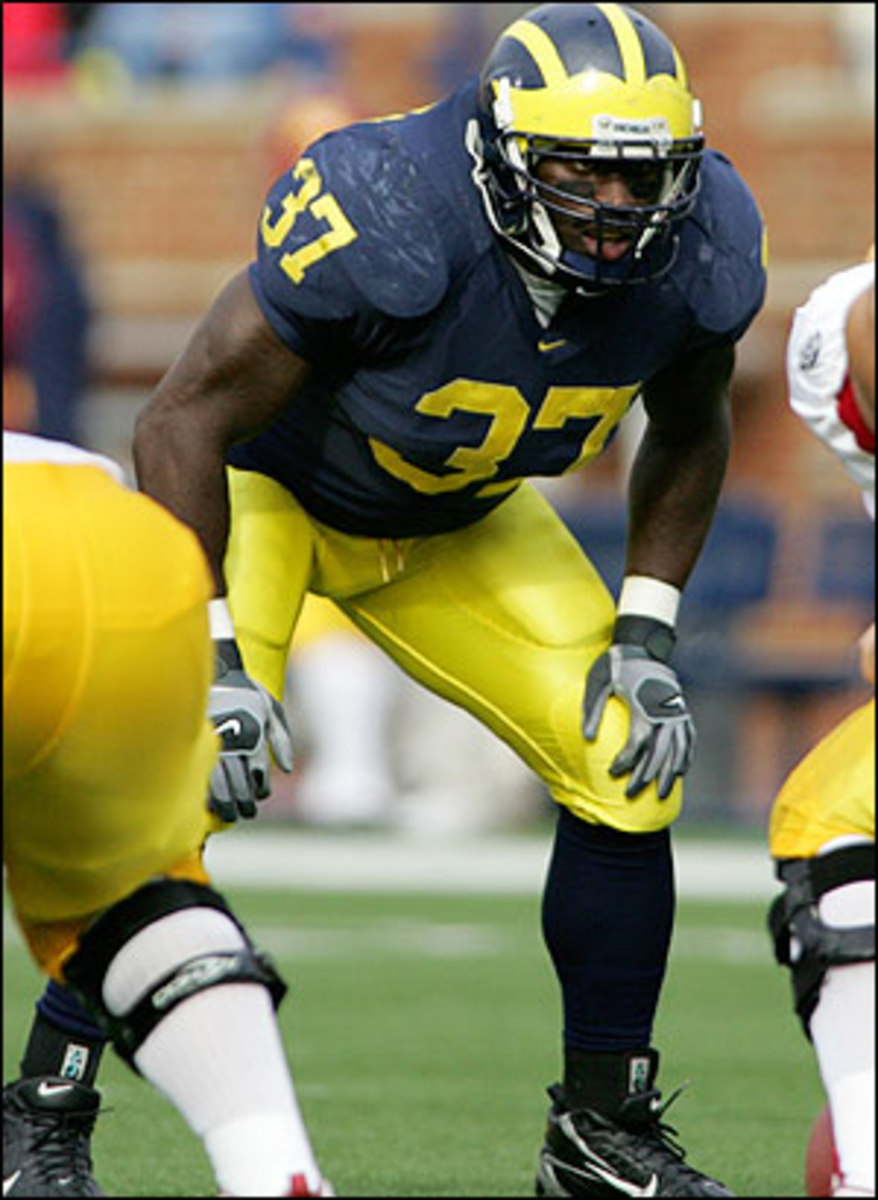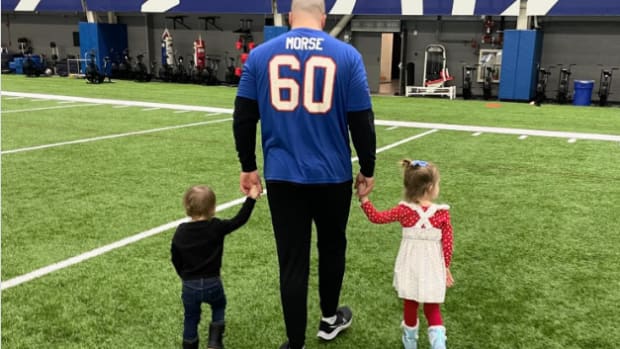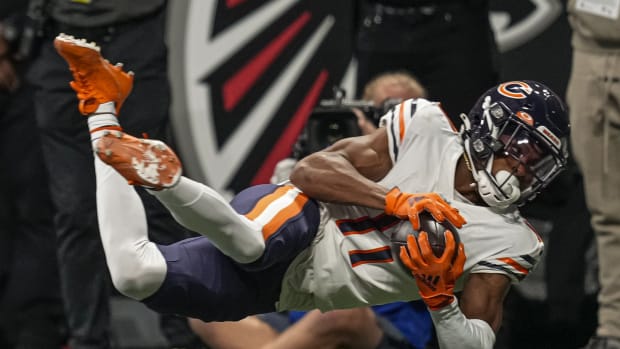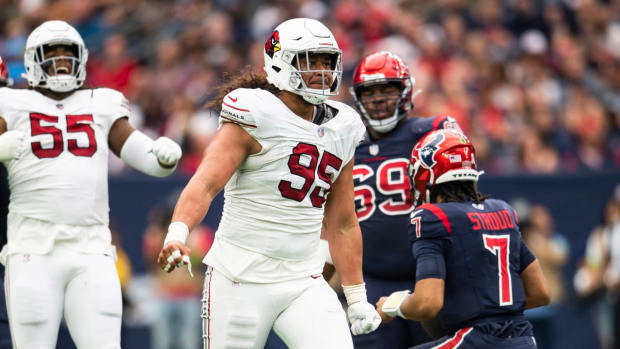Pro Day Risers and Sliders
The pro-day workouts are starting to wind down as the draft draws near. Several lesser-known prospects from big college programs really made names for themselves this week. In a draft with little depth, many of these players secured spots for themselves in the later rounds. There were also a few big-name prospects who stood out.
Chris Graham, OLB -- Michigan
Graham looked outstanding during Michigan's pro day as the underrated prospect weighed 232 then turned heads when he completed 37 reps on the bench. Graham later posted a 31-inch vertical jump and ran his 40 times in the mid-to-low 4.5-second range.
Drew Miller, C-G -- Florida
The Gators multi-purpose lineman was one of the most impressive players at Florida's workout on Wednesday. He measured 6-foot-5, 303 pounds and completed 34 reps on the bench and turned in a 30-inch vertical jump. Miller also ran his 40s between 5.02 and 5.15 seconds as well as a short shuttle of 4.4 seconds. His marks were near the top of those turned in by the centers at the combine, which Miller was not invited to attend.
Shannon Boatman, G -- Florida State
Boatman was another impressive looking blocker from the Sunshine State. He measured 6-5½, 320 pounds and turned in a vertical jump of 31 inches. His 40 times were swift, ranging between 4.96 and 5.03 on several watches. Boatman did not lift due to a minor shoulder injury.
Allen Ervin, RB -- Lambuth
Ervin, who led the NAIA in all-purpose yardage last season, put on a show after weighing in at 224. He completed 23 reps on the bench and twice posted an 10-8 broad jump. Ervin really impressed with a 38-inch vertical, a mark which scouts will add to since it was completed on a wall (there wasn't a proper measuring device at the workout). His 40s were in the 4.6 area. The Indianapolis Colts have already met with Ervin, who has more interviews with NFL teams scheduled.
Derrick Harvey, OLB-DE -- Florida
Harvey stuck with most of his combine numbers after weighing in at 269, two pounds lighter than in Indianapolis. He looked outstanding in position drills. Scouts say the college defensive end looked better in the linebacker drills than any other linebacker they had previously seen.
Frank Okam, DT -- Texas
Okam weighed in 12 pounds lighter than he did at the combine, tipping the scales at 335. His 40s were in the 5.2 area, a full .15 faster than his dash across the floor of the RCA Dome. He later participated in position drills, which included work on the offensive line. Okam's size, strength and mentality has a number of league decision-makers feeling he may be better as a blocker at the next level than on the defensive line.
Gosder Cherilus, OT -- Boston College
He significantly improved on his combine marks. He averaged 5.03 seconds in the 40, almost .20 better than his mark in Indianapolis. His short shuttle time of 4.71 seconds was also an improvement. Cherilus looked good in position drills and has likely sealed a place for himself in the late part of round one.
Adrian Arrington, WR -- Michigan
Arrington did not run at the combine, but quelled concerns about his speed by turning in 40 times in the mid-4.5s. He also caught the ball well in position drills. He is training in California with Wolverine quarterback Chad Henne.
Andre Fluellen, DT -- Florida State
The defensive tackle was not impressive. After measuring 6-2, 294 pounds, Fluellen couldn't do better than a 28-inch vertical jump, then ran his 40 in an average of 5.08.
Letroy Guion, DT -- Florida State
He also turned in a poor workout in Tallahassee. His 40s ranged in the low 5.2s as he looked slow and sluggish during the workout and in position drills.
Billy Pittman, WR -- Texas
Pittman was slow, running his 40 in 4.75 on a day when the Longhorn tight ends were turning in 4.65 times.
The master report with the official combine numbers from all the participants was released to NFL teams two weeks ago and it is not without controversy. There are questions about the vertical jump results and the electronic times for the 40.
Throughout the past three weeks of pro days, there has been drastic improvements by a large number of players in their vertical jump. Some have improved their combine marks by eight inches or more, unheard of in the past. Sources have said the new method of measuring a players reach, using one hand extended over the head rather than two, has led to the disparity.
The electronic times in the 40 were faster in almost 75 percent of the participants at the combine when compared to the hand times, in some instances more than .10 faster. Electronic times are usually slower and much more accurate than the hand times as they do not rely on human reaction.
While no one is saying anything on the record, some believe that the timing mechanism was off. That, or there was a problem at the start of the 40.






































